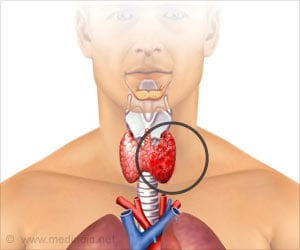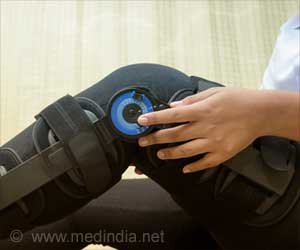Patients with low-risk thyroid cancer can be treated safely with lower doses of radiation treatment, reveals a new study.

TOP INSIGHT
Low-risk thyroid cancer patients can be treated safely with lower doses of radiation treatment.
Read More..
He reported results from 434 patients with low-risk thyroid cancer in the HiLo trial with a median (average) follow-up time of 6.5 years. The patients were randomized to receive low administered radioactive iodine activity (RAI) of 1.1GBq or the standard high RAI of 3.7GBq. They also received either Thyrogen (a genetically-engineered thyroid stimulating hormone, TSH), which stimulates thyroid cancer cells to absorb as much radioactive iodine as possible, making it more effective, or they were asked to stop taking their thyroid hormone tablets, which achieves the same effect by allowing levels of their natural TSH to rise.
Dr. Wadsley explained: "Activity is a measure of the amount of radiation that is administered to the patient in the form of a radioactive isotope of iodine. The aim of the treatment is to destroy any residual normal thyroid tissue and thyroid cancer cells following surgery to remove the thyroid gland.
The treatment is most commonly given as a capsule to swallow. As a general principle, we would always wish to give the lowest quantity of radiation possible to prevent the recurrence of thyroid cancer. This is to reduce the risk of longer-term side effects from the treatment, most importantly reducing the risk of the treatment causing another cancer in the future.
In our study, the low activity 1.1GBq dose was less than a third of the higher activity 3.7GBq dose, but has been proven to be as effective."
"The study showed that patients receiving a lower activity experienced fewer side effects, in particular, less risk of feeling sick or suffering damage to the salivary glands, which can potentially lead to a permanently dry mouth.
"The study also showed that quality of life and ability to continue normal activities was much better for patients receiving Thyrogen than those using thyroid hormone withdrawal. If thyroid hormone withdrawal is used, patients have to come off their regular medication for at least two weeks. This leaves them feeling extremely tired and in some cases quite depressed."
He said that the HiLo trial had the longest follow-up time of any other randomized study worldwide. Until now, there had not been enough evidence for international guidelines to do more than make weak recommendations about using 1.1GBq in low-risk patients, due to the limited data and only short-term follow-up.
"Now that we have confirmation that there is no difference in recurrence rates over a longer follow-up period, these recommendations can be strengthened, and clinicians and patients can be confident that use of the lower activity is acceptable and in fact preferable," he concluded.
The HiLo trial has finished, and now the researchers are investigating whether a group of patients can be identified that have such a low risk of recurrence of their thyroid cancer that they do not require radioiodine therapy at all.
The IoN trial (Iodine or Not) is allocating patients with very low-risk thyroid cancer to have radioiodine therapy or careful observation alone to determine whether there is any difference in recurrence rates and whether or not these patients could avoid iodine treatment altogether.
Dr. Martin Forster from University College London, who is chair of the NCRI Head and Neck Clinical Studies Group and was not involved with this research said: "Nearly seven years of follow-up data from the HiLo trial provides us with confidence that the lower 1.1GBq radiation dose for patients with low-risk thyroid cancer is a safe and effective treatment, and that international guidelines can be updated to reflect this. For many patients, the treatment and how it is delivered, as well as the short and long-term side effects, can have a big impact on their lives.
The HiLo trial is a good example of a well-conducted clinical trial that can make a real difference to the quality of life for these patients. We look forward to the results of the IoN trial, which could determine whether some patients have such a low risk of their cancer returning that they could be spared radioiodine treatment completely."
Thyroid cancer is rare, with approximately 3,500 cases in the UK each year, less than 1% of the total annual number of cancers. Low-risk thyroid cancers have a good survival rate with approximately 99 percent patients surviving for ten years or more.
Source-Eurekalert
 MEDINDIA
MEDINDIA



 Email
Email










